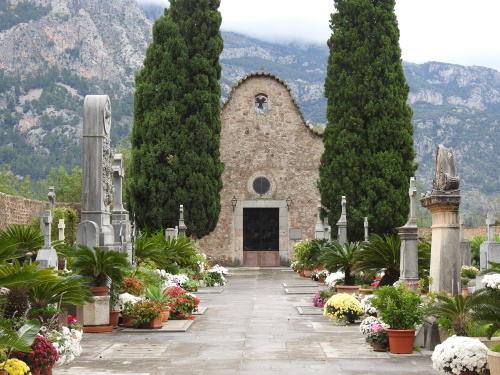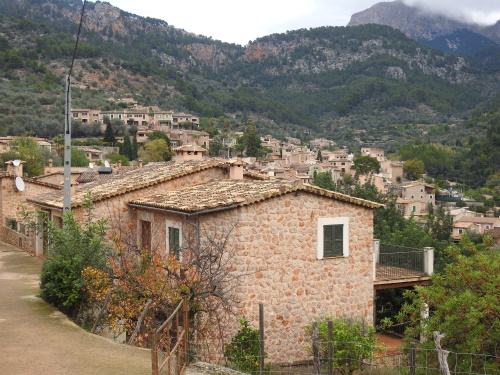Blog WHS Visits
WHS #764: Serra de Tramuntana
The Serra de Tramuntana is a beautiful landscape with steep mountainsides and lots of greenery. Like the rest of Mallorca, it is quite tourist trappy - so expect no lost paradise. An easy way to get to know the area is to take bus 203 from Palma. This is the ‘slow’ bus, that reaches the coastal town of Port de Soller after 1h20 min. It passes through the mountain villages of Valldemossa and Deia, and crosses large parts of the Serra de Tramuntana. These are narrow mountain roads, where two buses cannot pass each other. The stone villages seem glued to the steep mountain walls, that are so characteristic of this area. Near the coast, you can see dramatic cliffs.
The Serra is popular for hiking, even attracting long-distance hikers for a long weekend trip from Northern Europe. Since there are many daily flights from anywhere in Europe to Palma de Mallorca it is very accessible; from Palma it takes only 45 minutes by direct bus and then you are in the middle of this mountainous region. Crossing the mountain range on foot from west to east via the GR221 “Dry Stone Route” takes about 8 days with mountain huts available to spend the night.
I stayed for 2 nights in Soller, the liveliest place I encountered during my short week in Mallorca and Menorca in November. On my first day, I hiked a loop between Soller and Fortnalutx. Smaller towns like Fornalutx and Deia are included in the core zone of this WHS, while the bigger ones such as Pollença, Sa Calobra, Soller, and Port de Soller aren’t. The hiking trails are signposted, but I recommend bringing an additional tool to really find your way. I had downloaded a description from the internet and used my phone with maps.me navigation.
The "long road" from Soller to Fornalutx mostly runs on narrow paths between terraced farm fields. Lots of stones here: from dry stone walls to the road itself. At breakfast I overheard an English tourist asking whether these roads date back to Roman times – “No” was the answer of the B&B owner, “they were built 2 years ago by the Spanish government”!
Every centimeter of this area seems to be in use for farming. There are lemon tree groves and I also saw almonds. With a cactus and a palm tree here and there, this results in a beautiful green landscape with colorful accents of flowers and plants.
The town of Fornalutx is a well-restored village with stone buildings and tiled roofs. Binibassi and Biniaraix are two other traditional villages along this route.
I had planned another day of hiking for Sunday, but the weather was against me. I still went on my way from Soller to Port de Soller, but it started raining so hard that I took the bus halfway to take me to the final destination. Port de Soller turned out to be a somewhat run-down seaside resort, perhaps caused by the winter season or by Covid closures. I still walked all the way up to the lighthouse of Cap Gros (part of the core zone - dating from 1859, “its construction took place without consulting engineers or architects”). The steep coastal cliffs are only partly visible from here.
Els - 5 December 2021


